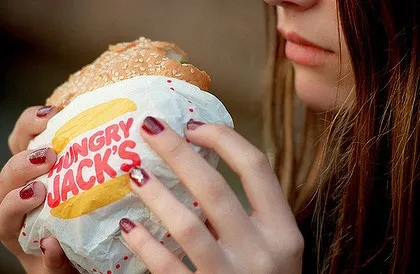
Fast foods still too salty despite efforts
Government intervention needed to make significant changes.
According to a recently published study of six Australian fast food chains, researchers from The George Institute for Global Health found salt content of fast food still too high despite successful attempts to reduce salt levels in the last four years.
“Despite the small reduction, salt levels in Australian fast food remain high. These small reductions in salt levels could be easily undone by the trend towards larger portion sizes,” noted senior author Dr. Elizabeth Dunford, from The George Institute for Global Health (TGI) and the University of Sydney. She emphasised the need for a sector-wide improvements and government engagement to effectively address the problem.
“While the direction of the change in salt levels in Australian fast foods is promising, there is an urgent need for a sector-wide strategy that will deliver further falls in the short term. While individual companies may deliver moderate improvements to their products, there is little evidence that significant sector-wide improvements can be achieved without government engagement,” pointing to United Kingdom's salt reduction program, where strong government engagement had resulted in lower salt levels. Australia should adopt a similar strategy, she recommended.
The study showed that the average Australian consumes 9 grams of salt a day, while the recommended intake by the Australian Government is only at 1600mg. “Australians can still consume their entire daily salt intake in one burger alone. This scenario is not rare - there were a number of burgers, pizzas, breakfasts, chicken sides and sandwiches that provided more than 1600mg of sodium per serve,” Dr. Dunford said. “For example, the burger with the most salt in the study, the Hungry Jack's Ultimate Double Whopper, contained 2514mg of sodium in 2010. That’s the equivalent of more than 1.5 teaspoons of salt – and we should be aiming for only one teaspoon of salt, maximum, per day.”
Using figures provided on company websites, the study looked at Pizza Hut, Hungry Jack’s, KFC, McDonald’s, Subway and Domino’s product. Overall sodium content across all items offered by major chains fell by 43mg/100g. Most product categories had lower mean sodium levels per 100g and per serve in 2012 compared to 2009.
Sodium levels in side dishes, however, rose over the four years. During the four-year study, Pizza Hut was the only company where sodium levels rose in food products, mainly due to side dishes such as chicken bites and large serving sizes in 2012. “Although the bite-sized chicken bits and other chicken side dishes were found to be lower in salt per serve, who eats just one? Per 100g, they had the highest salt content overall.”
The fact that sodium levels in KFC products decreased at the same time, even though both Pizza Hut and KFC are both owned by same company, Yum! Restaurants, lead Dr Dunford to observe: “This could indicate that there is a lack of coordinated effort to improve the healthiness of foods in many large corporations, and an absence of Government leadership in this area.”
“Salt reduction remains one of the most cost-effective options for improving public health in Australia and many other countries,” she noted.
























